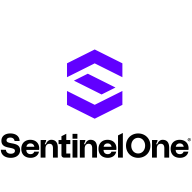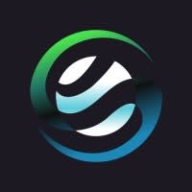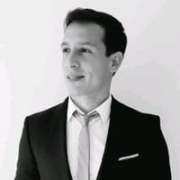


Morphisec and Lacework FortiCNAPP compete in security management, with Morphisec having an edge in endpoint protection through its unique capabilities in preventing zero-day attacks and ransomware, while Lacework FortiCNAPP leads in cloud security management and compliance.
Features: Morphisec provides seamless integration with Microsoft Defender, centralizing visibility into security events in a single dashboard. Its set-and-forget approach minimizes performance impact on endpoints. The standout feature is its in-memory protection, which effectively prevents zero-day attacks. Lacework FortiCNAPP excels in compliance and anomaly detection with detailed reporting. It offers capabilities to manage compliance posture efficiently and excels in identifying vulnerabilities across environments.
Room for Improvement: Morphisec could enhance reporting capabilities and extend integration beyond Microsoft Defender to other platforms. Users also desire easier updates to improve user engagement. Lacework FortiCNAPP users express the need for better integration with third-party tools and improved data governance, particularly in configuring alerts. Customization of the alert system could also benefit users who seek more tailored security responses.
Ease of Deployment and Customer Service: Morphisec supports deployment across Public, Private, Hybrid Cloud, and On-premises environments, with users praising their responsive and engaged technical support. Lacework FortiCNAPP primarily operates within cloud environments, providing helpful technical support, though sometimes slow. Users suggest that Lacework could improve customer communication regarding updates and changes.
Pricing and ROI: Morphisec offers a flat-rate pricing model per endpoint, viewed as cost-effective with no hidden charges, providing a clear ROI through enhanced security reliability and reduced workload. Lacework FortiCNAPP is perceived as more expensive, particularly for larger environments, but its unique compliance capabilities justify the price. While both deliver ROI by preventing breaches, Morphisec provides clearer cost benefits with its endpoint strategy.
| Product | Market Share (%) |
|---|---|
| SentinelOne Singularity Cloud Security | 2.3% |
| Lacework FortiCNAPP | 1.3% |
| Morphisec | 0.4% |
| Other | 96.0% |



| Company Size | Count |
|---|---|
| Small Business | 46 |
| Midsize Enterprise | 20 |
| Large Enterprise | 53 |
| Company Size | Count |
|---|---|
| Small Business | 4 |
| Midsize Enterprise | 4 |
| Large Enterprise | 4 |
| Company Size | Count |
|---|---|
| Small Business | 5 |
| Midsize Enterprise | 8 |
| Large Enterprise | 8 |
SentinelOne Singularity Cloud Security offers a streamlined approach to cloud security with intuitive operation and strong integration capabilities for heightened threat detection and remediation efficiency.
Singularity Cloud Security stands out for its real-time detection and response, effectively minimizing detection and remediation timelines. Its automated remediation integrates smoothly with third-party tools enhancing operational efficiency. The comprehensive console ensures visibility and support for forensic investigations. Seamless platform integration and robust support for innovation are notable advantages. Areas for development include improved search functionality, affordability, better firewall capabilities for remote users, stable agents, comprehensive reporting, and efficient third-party integrations. Clarity in the interface, responsive support, and real-time alerting need enhancement, with a call for more automation and customization. Better scalability and cost-effective integration without compromising capabilities are desired.
What are SentinelOne Singularity Cloud Security's standout features?SentinelOne Singularity Cloud Security is deployed in industries needing robust cloud security posture management, endpoint protection, and threat hunting. Utilized frequently across AWS and Azure, it assists in monitoring, threat detection, and maintaining compliance in diverse environments while providing real-time alerts and recommendations for proactive threat management.
Lacework FortiCNAPP provides robust cloud security, combining vulnerability management and multi-cloud insight with user-friendly controls, machine learning detection, and compliance support.
Lacework FortiCNAPP specializes in cloud security by merging machine learning anomaly detection with agent-based vulnerability management to offer detailed alerts and compliance reports. Its comprehensive approach allows continuous monitoring across AWS and Kubernetes, providing insights from an attacker's perspective. The platform offers automation and seamless Slack integration, facilitating collaborative and efficient cloud security management. Users value its ability to handle multi-cloud environments and scan IAC scripts, configurations, and compute nodes across AWS and GCP.
What are the key features?Organizations across sectors leverage Lacework FortiCNAPP for cloud security, focusing on compliance, security posture, and vulnerability management. It is widely used for monitoring AWS and Kubernetes environments, scanning IAC scripts, configurations, and securing compute nodes. It supports multi-cloud security posture management and log ingestion, enabling companies to maintain strong cloud infrastructures without dedicated security layers.
Morphisec integrates seamlessly with platforms like Microsoft Defender, offering signatureless protection against zero-day threats and ransomware. It enhances existing endpoint solutions with minimal maintenance through its set-and-forget deployment, providing heightened security and reduced false positives.
Morphisec strengthens defense strategies by merging memory morphing and signatureless protection to effectively block zero-day attacks and ransomware. It operates efficiently within existing infrastructure, reducing system impact and maintenance needs. Users find its full visibility dashboard invaluable. Despite its strengths, cloud deployment and reporting features can be improved. Stability, alerts, and integration with other systems pose challenges for users, impacting usability and support quality.
What are Morphisec's key features?
What benefits should users consider in reviews?
In security-focused industries, Morphisec is crucial for protecting workstations and servers against sophisticated attacks like ransomware. Its signatureless technology offers early threat detection, while compatibility with existing systems ensures seamless integration, providing advanced protection without additional licensing costs.
We monitor all Vulnerability Management reviews to prevent fraudulent reviews and keep review quality high. We do not post reviews by company employees or direct competitors. We validate each review for authenticity via cross-reference with LinkedIn, and personal follow-up with the reviewer when necessary.